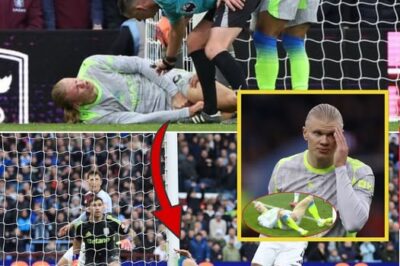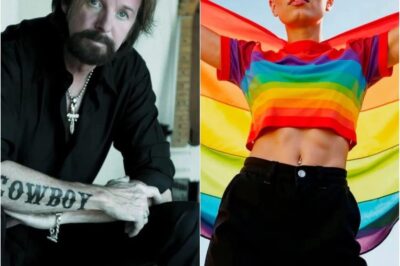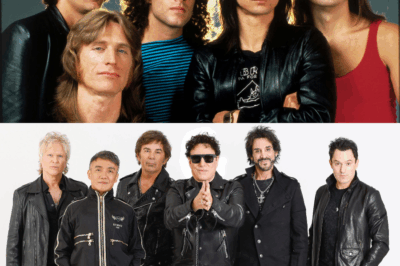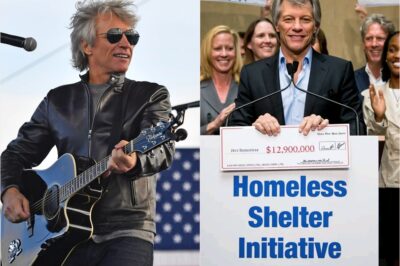Van Halen, 1978 — Austin, Texas. ![]() The year rock ‘n’ roll got a shock to its system. Eddie’s guitar was pure lightning, Dave was all fire and swagger, and the brothers Van Halen with Michael Anthony drove the crowd into madness. This wasn’t just a concert — it was a revolution on stage, a moment when the world realized: rock would never sound the same again.
The year rock ‘n’ roll got a shock to its system. Eddie’s guitar was pure lightning, Dave was all fire and swagger, and the brothers Van Halen with Michael Anthony drove the crowd into madness. This wasn’t just a concert — it was a revolution on stage, a moment when the world realized: rock would never sound the same again.
Unchained” has many of the elements that make Van Halen songs memorable: ear-grabbing riff, killer guitar solo, fist-pumping energy, rich vocal harmonies. The song’s secret weapon, however, comes during its breakdown, with a flippant, tongue-in-cheek exchange between singer David Lee Roth and producer Ted Templeman.
The song, which was recorded during the spring of 1981 and released as a single on July 22 that year is one of the most straightforward tracks from Van Halen’s boundary-pushing fourth album, Fair Warning. The attack pulls back about mid-song, with Roth telling Templeman “That suit is you!” with the producer firing back, “Come on, Dave, gimme a break!”
Templeman, who produced seven Van Halen albums, as well as solo releases by Roth and his replacement, Sammy Hagar, wrote in his memoir, Ted Templeman: A Platinum Producer’s Life in Music, that he really was wearing “a nice suit” in the studio that day because he was attending “an important meeting” after the session. “In the control room, Dave and I tossed ideas around for the post-solo breakdown,” Templeman recalled. “During that conversation, Dave started busing my balls about how sharp I looked in my suit.”
Roth’s line, according to Templeman, came from the Coasters’ 1960 single “Shoppin’ for Clothes,” although he recalled that Roth “blew his line” the first time through.
“We had a back-and-forth through the talkback as we prepared to recut the part,” Templeman remembers. “Then one of the guys, maybe Alex [Van Halen] or Dave, suggested we add an exchange, one between Dave and me to the song. After we recorded it, we all busted out laughing when we heard the playback.
“Those tongue-in-cheek lyrics —coupled with that monolithic guitar riff — makes ‘Unchained’ the best example of what I mean when I say that Van Halen was a heavy metal band with a sense of humor.”
Watch Van Halen’ ‘Unchained’ Video
“Unchained” also showcases one of the most prominent uses of the MXR M-117 flanger pedal, whose swirling sonic effects helped to define Eddie Van Halen’s guitar sound. (The company created an EVH Signature Series, with models introduced during 2004 and 2007 — including an EVH117 flanger pedal that replicated the sounds captured on Van Halen’s records.) He told Guitar World in 2015 that the flanger effect on “Unchained” was “totally by accident.”
“For some reason I just thought that the flanger sounded good there,” Eddie Van Halen said. “The way it goes from the sweep up to the sweep down wasn’t planned. My normal setting just happened to fit the tempo of the song. I kicked it in and out, and when I heard the way the flanger swept up and then down, I thought it sounded cool. Nothing I’ve ever done is really all that thought out. I’d just wing stuff, and if it sounded cool I would do it again.”
Though the “Unchained” single did not chart, it became a rock-radio fixture for Van Halen during the Fair Warning campaign. The band also made a live performance video for “Unchained,” directed by Bruce Gowers. “Unchained” is a particular favorite of Eddie Van Halen’s son Wolfgang — who proclaimed it “pretty fucking awesome” during an interview with Songfacts — and it appears on both Van Halen compilations, 1996’s Best of – Volume I and 2004’s The Best of Both Worlds.
The Best Song From Every Van Halen Album
They released a dozen albums over their career. These are the songs for your playlist.

Van Halen (1978): Im the One
Warner Bros
‘Van Halen’ (1978): “I’m the One”
Eddie Van Halen’s guitar playing understandably dominated nearly every conversation about Van Halen’s debut album. But he wouldn’t have sounded nearly as great if he wasn’t also part of a razor-sharp band. Years on the cover-band circuit had allowed the foursome to absorb and tinker with the best songwriting from a variety of genres. That’s probably why they didn’t think twice about interrupting one of Eddie’s revolutionary guitar riffs with a good old-fashioned doo-wop breakdown.

Van Halen II (1979): Dance the Night Away
Warner Bros
‘Van Halen II’ (1979): “Dance the Night Away”
The other not-so-secret weapon in Van Halen’s arsenal was their knack for writing great pop hooks. This gift was rarely placed on display as unabashedly as it was on the wistful “Dance the Night Away,” but Eddie Van Halen told Van Halen News Desk it wasn’t a strategic decision. “I can’t help it if I come up with a poppy-sounding riff. We just do what we come up with, as opposed to forcing ourselves to come up with something commercial.”

Women and Children First (1980): Everybody Wants Some!!
Warner Bros
‘Women and Children First’ (1980): “Everybody Wants Some!!”
Having burned through the best of their pre-fame song stash on their quickly recorded first and second albums, Van Halen was afforded a bit more time for studio experimentation on ‘Women and Children First.’ They coupled this freedom with the lessons they’d learned about working in front of massive arena and stadium crowds over the previous two years, and came up with some truly widescreen-ready songs. As with the earlier “I’m the One,” “Everybody Wants Some!!” gets the nod by being the best showcase for all four musicians, separately and together. It remains the centerpiece of their concerts for decades.

Fair Warning (1981): Unchained
Warner Bros
‘Fair Warning’ (1981): “Unchained”
Eddie Van Halen was admittedly in a bad mood for much of the recording of ‘Fair Warning’ – chafing, among other things, at the no multi-tracking production rules put in place by producer Ted Templeman. Van Halen’s frustration is palpable throughout the album, which is much darker, angrier and more serious than their previous records. The group continued to push into new territory, such as the synth-rock “One Foot Out the Door” and the dub-influenced “When Push Comes to Shove.” But it’s the most traditional riff-rocker on the album, “Unchained,” that gets the prize here. This song is the reason every wannabe guitar player in your high school bought a flanger, and the lyrics feature a bit more of Van Halen’s familiar celebratory vibe than the rest of ‘Fair Warning.’

Diver Down (1982): Little Guitars
Warner Bros
‘Diver Down’ (1982): “Little Guitars”
Along with its album mate “Secrets,” this is one of the most lovely and evocative songs Van Halen ever released, with a gorgeous distorted guitar refrain that showed they didn’t need to turn to keyboard ballads to be romantic. It’s also proof positive they could have found a way to gracefully mature with Roth in the fold, if they had been able to overcome their personal and creative differences.

1984 (1984): Panama
Warner Bros
‘1984’ (1984): “Panama”
Of course, the big news on ‘1984’ was the introduction of keyboards, with hit singles “Jump” and “I’ll Wait” rocketing the band to even higher levels of popularity. The rest of the album was entirely guitar-focused, and as if to reassure longtime fans that everything was still in its right place, they put the best of the bunch – featuring perhaps Eddie’s most undeniable riff ever – right after the album-opening “Jump.” Bonus points to Roth for subverting the “song about a car but really it’s about sex” cliche by actually singing about the car.

5150 (1986): Best of Both Worlds
Warner Bros
‘5150’ (1986): “Best of Both Worlds”
The biggest what-if in Van Halen history will always revolve around what a follow-up to ‘1984’ might have sounded like with Roth on vocals. Emboldened by the mainstream success of “Jump,” and now paired up with a stronger (if less unique) singer in Sammy Hagar, Van Halen of course doubled up on the keyboards this time out. But as he did with “Little Guitars,” Eddie (clearly inspired by his new songwriting partner) also proved there was still room for the band’s guitar-based material to get more sophisticated. On “Best of Both Worlds,” Hagar rises to the challenge with one of the most thoughtful and well-sung lyrics of his entire career.

OU812 (1988): Cabo Wabo
Warner Bros
‘OU812’ (1988): “Cabo Wabo”
Van Halen get the Led out on this one, stretching on Eddie’s best ‘Physical Graffiti’ riff for nearly seven minutes. The lyrics aren’t deep – it’s about being drunk on a beach, after all – but Hagar and Van Halen’s tag-team vamping makes it the clear highlight of a very diverse but sometimes spotty album. The song’s title also became the name of the tequila brand that made Hagar a bazillionaire.

For Unlawful Carnal Knowledge (1991): Poundcake
Warner Bros
‘For Unlawful Carnal Knowledge’ (1991): “Poundcake”
“Back to basics” was the rallying cry for Van Halen’s third album with Sammy Hagar, with only “Right Now” built on anything except electric guitars. The most innovative of the rock songs, “Poundcake” is also clearly the best. Eddie’s use of a power drill on the intro got all the press, but the more essential addition was doubling up on the main riff with a 12-string guitar for extra texture.

Balance (1995): Dont Tell Me (What Love Can Do)
Warner Bros
‘Balance’ (1995): “Don’t Tell Me (What Love Can Do)”
Both Hagar and his soon-to be former bandmates later admitted they didn’t get along during the creation of their fourth album together. It shows. This was also after the grunge wave hit, so the subject matter is suddenly dark and serious – and unlike ‘Fair Warning,’ it doesn’t feel authentic. Lead single “Don’t Tell Me (What Love Can Do)” is a relative highlight, but strictly in a “it’s kinda interesting to hear Van Halen pretend to be Soundgarden” way. “That song didn’t take us anywhere, and I know why now,” Hagar later told the A.V. Club. “It wasn’t what Van Halen fans wanted. It showed the darkness of Van Halen, and basically the end of the band.”

Van Halen III (1998): Once
Warner Bros
”Van Halen III’ (1998): “Once”
Van Halen’s attempt to catch lead-singer lightning in a bottle three times didn’t work. But this album does feature a handful of interesting musical ideas, chief among them the atmospheric, meditative “Once.” If this had turned up instead on a Gary Cherone solo album, with Eddie Van Halen guesting, maybe people would have said, “hey, that’s pretty cool you should do more stuff like that.” (Or, maybe not: It’s still too long.)

A Different Kind of Truth (2012): Shes The Woman
Interscope
‘A Different Kind of Truth’ (2012): “She’s The Woman”
After nearly 30 years, Roth returns. But they prevent the circle from fully closing, however, when bassist Michael Anthony and his pivotal background vocals depart. Some people needlessly complained about the album being partly made up of reworked unreleased tracks from the band’s early days, but so what? Why, exactly, do you want those to stay in the vault? For the most part, ‘A Different Kind of Truth’ was a welcome return to familiar territory. Roth’s voice was naturally more weathered, but he still knows how to both compliment and compete with Van Halen’s guitar better than anybody else. On “She’s the Woman,” he drops the funniest line (“She wanted something to regret – tomorrow morning”) while Eddie is still wringing the final notes out of another dazzling solo.
News
Erling Haaland Mocked by Fans for ‘Sacrificing His Future Kids’ to Score an Offside Goal – The Agonizing Collision in Man City’s 0-1 Villa Defeat That Sparked a Viral Meme Storm and Exposed a Deeper Crisis.
The Manchester City striker drew a blank for the first time in 13 matches for club and country in the 1-0 defeat. 3…
Kid Rock’s Recovery Journey: Heartfelt Message Sparks Fan Support After Surgery
Kid Rock has shared a heartfelt message following his recent surgery, asking for prayers, strength, and support as he focuses…
Tensions Explode On Air: Ronnie Dunn Sparks Outrage After Refusing to Host Pride Month Event
Country icon Ronnie Dunn, best known as one half of the legendary duo Brooks & Dunn, has ignited a media…
Legendary rock band Journey is making Des Moines a stop on its farewell tour in 2026.
Legendary rock band Journey is making Des Moines a stop on its farewell tour in 2026. It may not yet…
A ROCK STAR’S GIFT THAT GOES BEYOND THE STAGE
In a powerful act that’s already being called “the most meaningful encore of his career,” Jon Bon Jovi has turned…
David Allan Coe Drops Bombshell: The Truth About His Bond with Willie Nelson Revealed!
In a stunning revelation that has sent shockwaves through the country music community, David Allan Coe has finally confirmed long-standing…
End of content
No more pages to load












